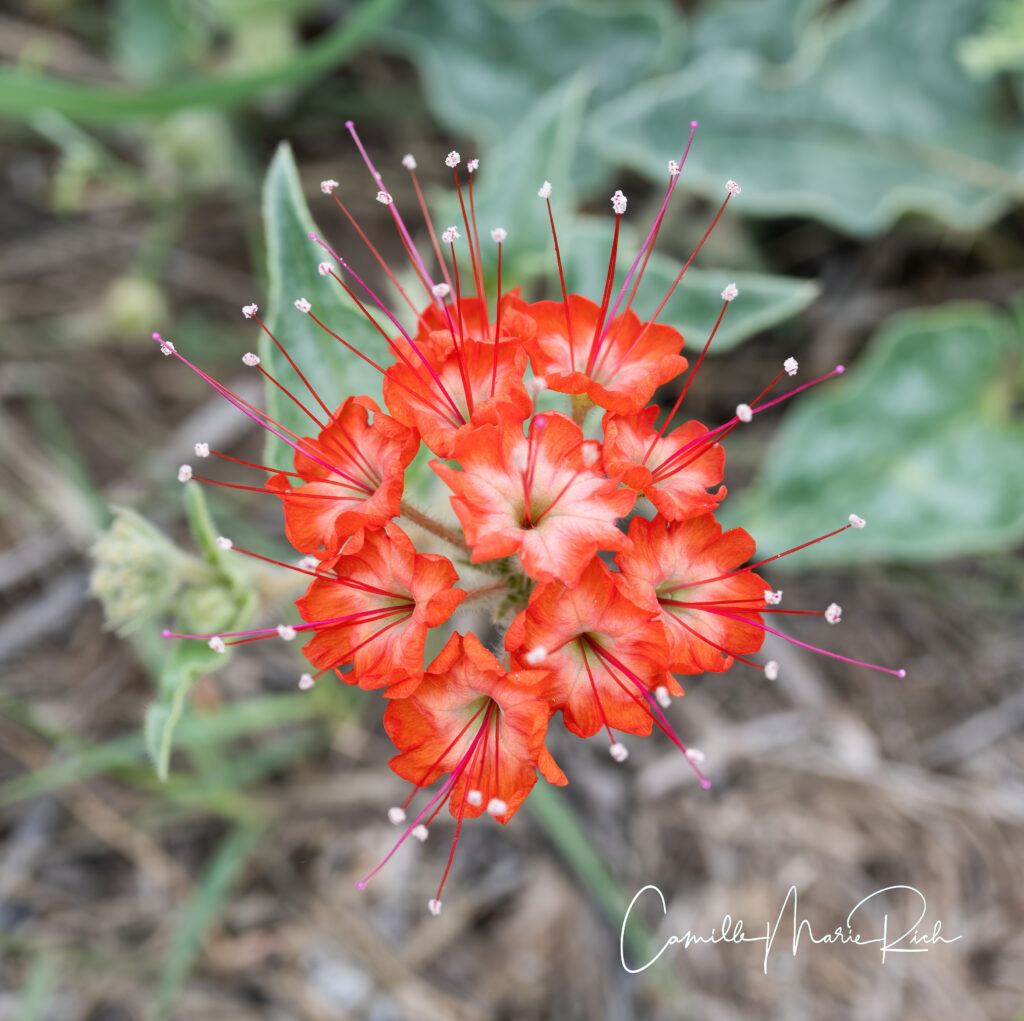
The indescribable beauty of the Scarlet Musk Flower is best illustrated with a picture. This picture was snapped on a somewhat cloudy day in Starr County while I was out and about on a driving tour of the countryside. Recent, ample rains had helped native flora spring forth with renewed vitality, luster, and brilliance. Sharp pops of bloom colors, ranging from blues, purples, yellows, creams, and whites, just to name a few, were generously scattered and strewn up and down the lone gravelly road that my vehicle crept along for as far as my eye could see.
At a certain point in my driving tour, I parked my vehicle, and got out to walk amongst the many low-growing, blooming, wildflowers so that I could get a closer look at each of them. I treaded as lightly as I could to avoid crushing any flowers underfoot as I continued to meander through the blooms. Soon, I spied a plant sporting something bright red. Could this be a red bloom? Whatever this plant was, it towered at least four (4) to five (5) inches above its plant neighbors. I picked up my pace and soon I arrived at this breathtaking Scarlet Musk Flower. (Nyctaginia capitata) This flower was mesmerizing, gorgeous, exquisite, and delicate. It was hard for me to move forward on the path after gazing upon its beauty.
As soon as I got home, I had to consult a few of my go-to plant books for more information on this member of the Nyctaginaceae family. This plant also goes by the name Devil’s Bouquet. It is a perennial that grows from a tuberous root, can grow up to heights of sixteen (16) inches, and is an excellent nectar plant for butterflies. Geographically speaking, this plant is “widespread from Cameron County north through Edwards Plateau, west throughout Chihuahuan Desert. Grasslands, fields, prairies, open desert scrub, roadsides, and other open areas. Summer, fall. Common.” *
*“Wildflowers of Texas,” by Michael Eason. Timber Press Field Guide. Timber Press, Inc. Portland, Oregon. 2018
Additional source of plant information:
“Plants of Deep South Texas,” by Alfred Richardson & Ken King. Texas A & M University Press. College Station, Texas. 2011.




